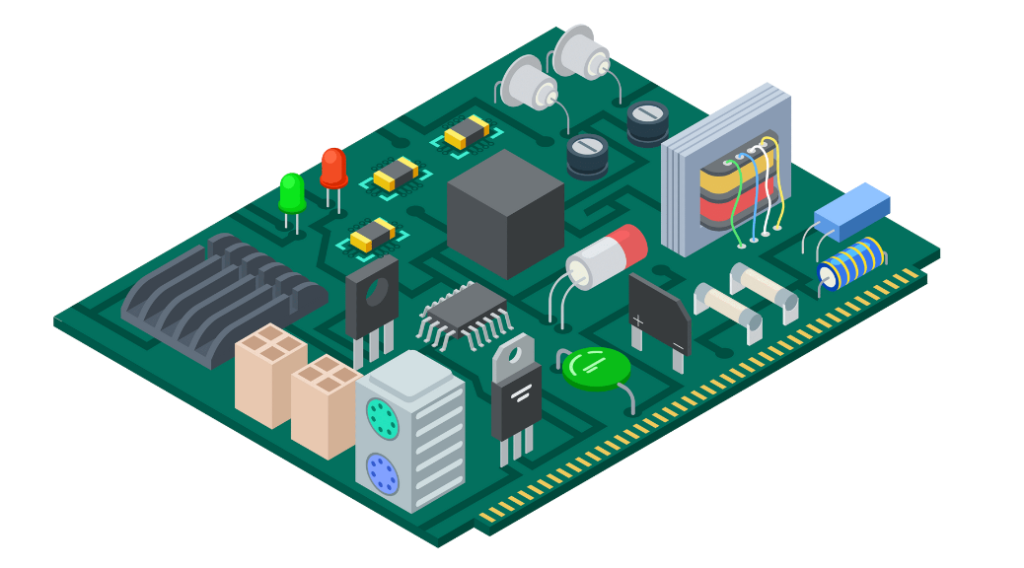Introduction
In the era we live in, computers make a significant part of our daily lives. Even as I talk about it, I am using one to write this article and share my knowledge with you. Hence it is crucial to know the history of the development of these fantastic machines. We have already talked about the first generation and second generation of computers.
These generations marked the beginning of development leading to the brilliant computers we now know of. After the first and second generations, came the third generation of computers marking the remarkable development of computers.
Let us now talk about the third generation of computers more in detail.
Content
What is the third generation of computers?
The third generation of computers existed from the year 1965 to 1971. These computers replaced individual transistors with integrated circuits (IC).
The computers of this generation were upgraded significantly as compared to the first and second generations. They are much more advanced and reliable.
In this generation, punch cards were replaced by a keyboard and mouse for input control. These computers used a time-sharing multiprogramming operating system. They supported remote processing. High-level languages like COBOL, PASCAL, FORTRAN-II, etc were used for programming the computers.
The computers of this generation introduced the concept of personal computers. The computers were now not limited to scientists and businesses, they were made available for personal use. These computers could be used for personal tasks like storing data and simple calculations. They were also used for high-speed data processing for tasks like weather forecasting, subatomic physics, and many more.
What are Integrated Circuits?
Integrated circuits were developed by Robert Noyce and Jack Kilby in 1958 – 1959. It is essentially a semiconductor material that has a large number of transistors, resistors, and capacitors integrated into one single chip along with its circuitry. These circuits played the role of computer memory, microprocessors, and even amplifiers. Integrated circuits completely changed the way computers were designed and built.

Some of the Third Generation of Computers
IBM System/360
IBM System/360 or IBM S/360 or IBM 360. This was a family of mainframe computers developed by IBM in the year 1964. Their development was a groundbreaking checkpoint that revolutionized the computer development industry. These computers inflected a profound impact on the industry, setting new standards and goals.
IBM 360 provided multiple models all with varying processing power and memory limits. They were designed in a way to be compatible with each other. This allowed the consumers to pick as per their needs. It allowed an easy upgrade without any software change once the requirements changed.
Honeywell – 6000
Also known as H-6000, Honeywell-6000 was another series of mainframe computers. It was developed and introduced by Honeywell in the 1970s. This series of computers introduced various new concepts and had a lasting impact on the computer industry. The computers featured 32-bit architecture which offered higher precision and efficiency. It also introduced the concept of virtual memory. It was able to manage large data easily. It could run multiple applications easily. They were widely used in government industries, research labs, and large enterprises.
PDP-8 (Programmed Data Processor)
PDP-8 or DEC PDP-8 was a minicomputer introduced by Digital Equipment Corporation (DEC) in 1964-1965. It is considered to be the first commercially successful minicomputer. It was small, affordable, and versatile. This made it accessible to smaller organizations and research institutions. This availability to a wider audience made it a milestone achievement in the history of computers. This helped popularize the idea of minicomputers which has impacted the design of computers as we now know and use regularly.
Technology used in the Third Generation of Computers
- Integrated circuits were used as the basic technology in third-generation computers.
- For programming, high-level languages like COBOL, FORTRAN – II, PASCAL, etc were used.
- Keyboard and mouse were introduced as input devices.
- Monitors were used for outputs in place of paper tapes and printouts.
- Remote processing, time-sharing, and multiprogramming operating system were introduced in these computers.
- Magnetic storage devices were used in the third-generation computers.
Advantages of Third Generation of Computers
- Due to the use of ICs, the size of these computers was reduced significantly and they required lesser space.
- They produced less heat and required less amount of electrical energy as compared to the first and second generations.
- Use of a keyboard, mouse, and monitor made input-output operations much faster and easier.
- They had faster computational speed.
- They were more reliable and accurate.
- There was less hardware failure.
- They required less maintenance.
- Time-sharing and multiprogramming allowed multiple programs to run at the same time.
- They provided better storage capacity.
Disadvantages of Third Generation of Computers
- Air conditioning systems were still required for cooling.
- Manufacturing ICs required highly sophisticated technology and skills.
- Maintenance of ICs was difficult.
- They were still very expensive.
- A specially trained workforce was required to handle ICs.
Impact of Third Generation Computers on Society
The third generation of computers was a milestone achievement in the computer industry. They were a pioneer in the development and advancement that we know now. The third generation of computers was smaller, faster, more reliable, and cheaper than previous generations. This made them available to be used both in businesses and in homes.
Conclusion
As we see, with each phase of development, the advantages keep increasing and the drawbacks keep reducing. The third-generation computers brought with them a significant revolution in the development of computers. A lot of new features were introduced with their development. This generation introduced the idea of computers being used personally instead of only being used by large businesses. The development did not stop there and continued leading to the fourth generation of computers and further. Even after so many years of development, we can see the roots of today’s computers going back to the third generation computers.
